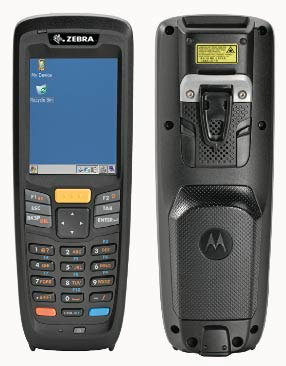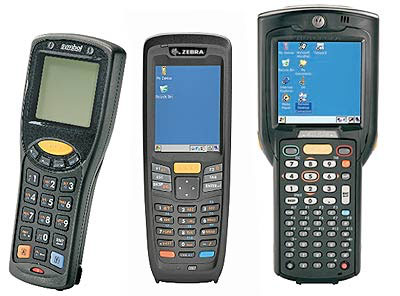On December 12, 2011, Motorola Solutions, the enterprise division of which is now part of Zebra, introduced the MC2100 Series of handheld industrial mobile computers to address the need for a smaller, rugged mobile computer in enterprise inventory management and similar tasks. Fitting between the basic MC1000 data capture handheld and the larger and more elaborate MC3100, the new MC2100 can be seen as a faster and more versatile version of the basic MC1000.

So what do customers get with the new MC2100? That would be a handy industrial handheld that's about as wide as an Apple iPhone but a couple of inches longer because of the physical keypad and also thicker because of the replaceable smart battery and the intergrated laser scanner or imager. The whole thing weighs 8.5 ounces and fits into most pockets, but it's a powerful data capture device, rugged enough to handle far more abuse than any consumer device, and it includes such enterprise-class functionality as push-to-talk, remote device management, and support for Motorola's RhoElements application development platform.
Below is a fairly accurate size comparsion between the MC1000 (left), the new MC2100 (middle), and the MC3100 (right):

Note that in a world of ever more powerful consumer smartphones based on the iOS and Android operating system, most industrial handheld designs remain based on more traditional electronics and standards, and the MC2100 is no exception. The display measures just 2.8 inches diagonally and offers the 240 x 320 pixel resolution that has been common to workhorse industrial handhelds for many years. The Marvell PXA320 processor, while advanced by industrial handheld standards, is a 624MHz single core design. And the OS is Microsoft's no-frills Windows Embedded CE 6.0.
On the battery side, there is a 2,400 mAh rechargeable "smart" Li-Ion pack that, if prior Motorola "smart" batteries are an indication, includes information markers on the battery that show remaining charge and overall battery health. The specs do not include voltage and expected battery life on a charge.
For data capture and scanning, the MC2100 can be equipped with either a 1D linear imager, 1D laser, or a 1D/2D area imager. The specs do not show what specific engines the MC2100 uses, but states that "all three scan engines can capture damaged, dirty and scuffed bar codes on the first scan."
On the wireless side, the MC2180 version of the MC2100 series comes with single-band 802.11b/g/n WiFi and Bluetooth v2.0 Class II with enhanced data rate. Why version 2.0 and not the more secure version 2.1 is not clear as the company does point out the comprehensive WiFi security support (WPA, WPA2, EAP-TTLS/MSCHAPv2, EAP-FAST, PEAPv0/EAP-MSCHAPv2, PEAPv1/EAP-GTC, and EAP-TLS).
The MC2100 is a remarkably (and suitably) rugged device that can survive multiple 4-foot drops, survived 500 tumbles from about two feet, and it can operate within an extremely wide temperature range of -4 to 122 degrees Fahrenheit. The device carries an IP54 ingress protection rating, which means it is protected against dust and also against water spray from all directions. And the scanner window is protected by a layer of Corning Gorilla Glass.
Motorola Solutions also points out that the MC2100 is compatible with their RhoElements, making it the first value-priced rugged mobile computer to support HTML5. RhoElements allows the creation of a single application that looks, feels and acts the same on any supported Motorola mobile computer, regardless of whether it runs on the Android, Microsoft Windows Mobile or Windows CE operating system, thus eliminating the need to create and maintain separate applications for different operating systems.
Overall, the MC2100 represents a much welcome addition to the company's lineup of workhorse data collection mobile computers. While very much remaining a traditional industrial handheld, the MC2100 is considerably more powerful than the basic MC1000 and neatly fills the whole between the MC1000 and the company's larger and more comprehensive mobile handhelds.



